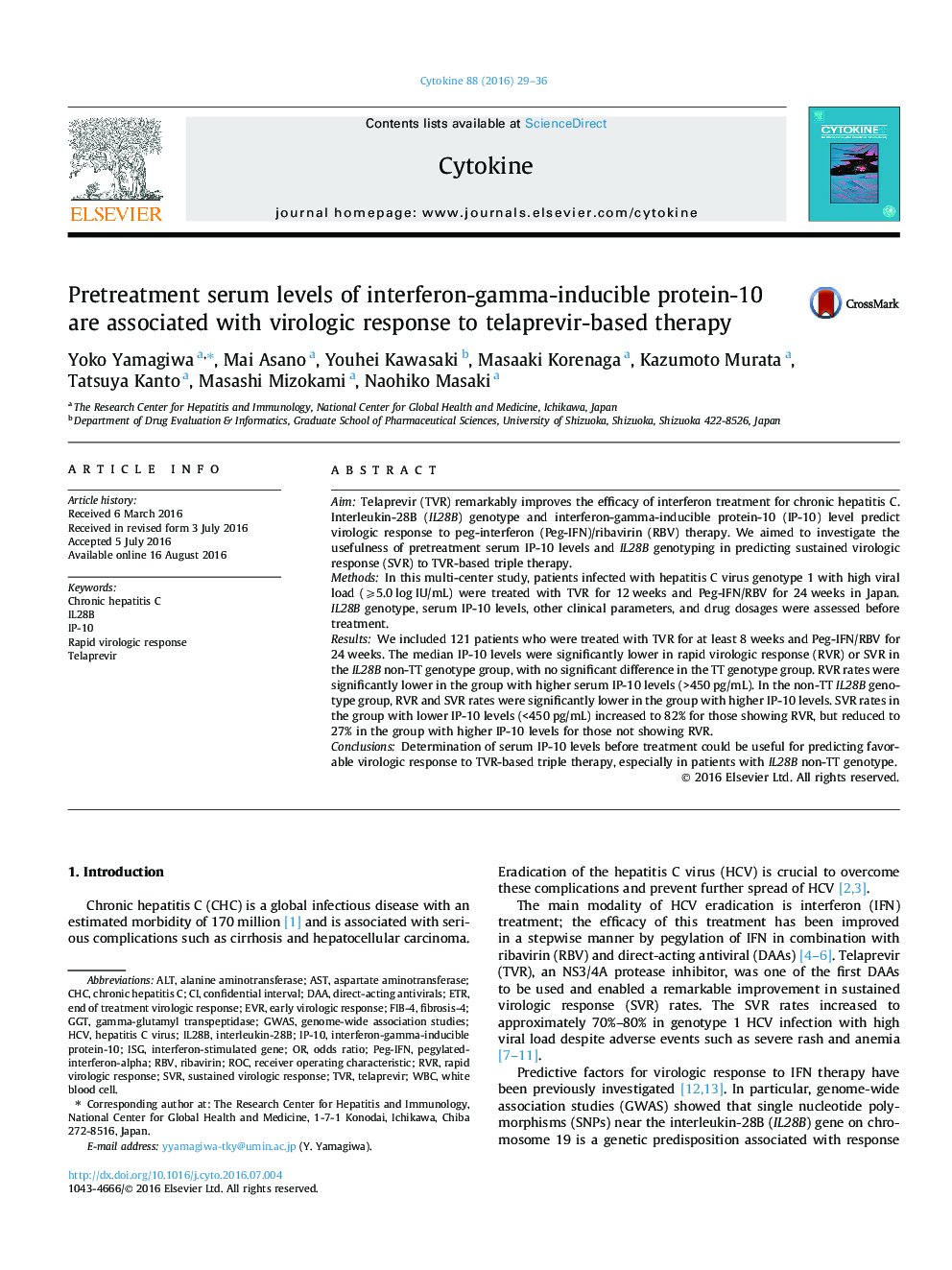| کد مقاله | کد نشریه | سال انتشار | مقاله انگلیسی | نسخه تمام متن |
|---|---|---|---|---|
| 5896587 | 1568724 | 2016 | 8 صفحه PDF | دانلود رایگان |

- IL28B genotype still affected response to TVR-based therapy.
- Serum IP-10 levels were significantly lower in patients who achieved RVR.
- Measurement of serum IP-10 is more important in patients with IL28B non-TT genotype.
AimTelaprevir (TVR) remarkably improves the efficacy of interferon treatment for chronic hepatitis C. Interleukin-28B (IL28B) genotype and interferon-gamma-inducible protein-10 (IP-10) level predict virologic response to peg-interferon (Peg-IFN)/ribavirin (RBV) therapy. We aimed to investigate the usefulness of pretreatment serum IP-10 levels and IL28B genotyping in predicting sustained virologic response (SVR) to TVR-based triple therapy.MethodsIn this multi-center study, patients infected with hepatitis C virus genotype 1 with high viral load (⩾5.0 log IU/mL) were treated with TVR for 12 weeks and Peg-IFN/RBV for 24 weeks in Japan. IL28B genotype, serum IP-10 levels, other clinical parameters, and drug dosages were assessed before treatment.ResultsWe included 121 patients who were treated with TVR for at least 8 weeks and Peg-IFN/RBV for 24 weeks. The median IP-10 levels were significantly lower in rapid virologic response (RVR) or SVR in the IL28B non-TT genotype group, with no significant difference in the TT genotype group. RVR rates were significantly lower in the group with higher serum IP-10 levels (>450 pg/mL). In the non-TT IL28B genotype group, RVR and SVR rates were significantly lower in the group with higher IP-10 levels. SVR rates in the group with lower IP-10 levels (<450 pg/mL) increased to 82% for those showing RVR, but reduced to 27% in the group with higher IP-10 levels for those not showing RVR.ConclusionsDetermination of serum IP-10 levels before treatment could be useful for predicting favorable virologic response to TVR-based triple therapy, especially in patients with IL28B non-TT genotype.
Journal: Cytokine - Volume 88, December 2016, Pages 29-36